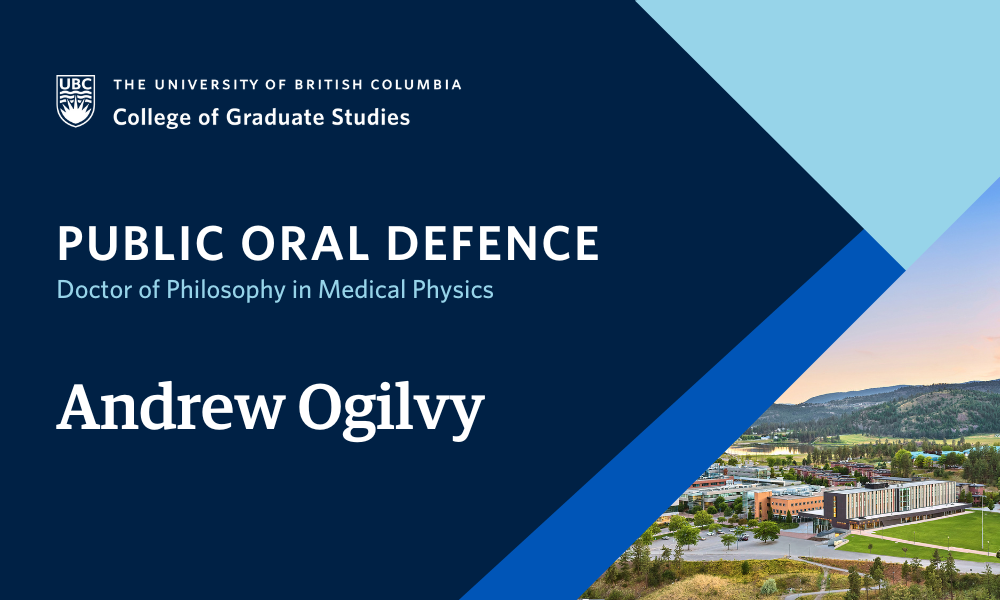
- This event has passed.
Dissertation Defence: Fan-beam optical computed tomography using solid tank designs for use in 3D radiation dosimetry
November 1, 2023 at 1:00 pm - 5:00 pm

Andrew Ogilvy, supervised by Dr. Andrew Jirasek, will defend their dissertation titled “Fan-beam optical computed tomography using solid tank designs for use in 3D radiation dosimetry” in partial fulfillment of the requirements for the degree of Doctor of Philosophy in Medical Physics.
An abstract for Andrew Ogilvy’s dissertation is included below.
Examinations are open to all members of the campus community as well as the general public. This examination will be offered in hybrid format. Please email andrew.jirasek@ubc.ca to receive the Zoom link for this defence.
ABSTRACT
Three-dimensional dosimeters have potential to advance radiation treatment through comprehensive three-dimensional dose verification. While they offer a distinct advantage, their application is intricate, requiring specialized expertise for accurate readout. Optical computed tomography (CT) stands out as a primary modality for imaging three-dimensional dosimeters used in validating complex radiotherapy treatments.
The objectives of this thesis are to (1) develop a ray-tracing simulator capable of calculating an optimized optical CT geometry given the optical properties of the dosimeter and manufacturing materials, (2) design, optimize, manufacture, and commission a fan-beam solid tank optical CT scanner for use on FlexyDos3D dosimeters, and (3) update the ray-tracing simulator to enable optimization for small-detection system scanners.
A ray-tracing simulator was developed to find an optimized geometry for a prototype solid tank optical CT scanner. Five geometric variables were adjusted to assess the geometry’s performance based on three properties: effective radius, magnification, and beam uniformity. The optimization workflow flexibility was demonstrated by finding optimal geometries for two optically different 3D dosimeters, FlexyDos3D and ClearView™.
An optimized optical CT scanner design for FlexyDos3D dosimeters was manufactured and commissioned. The prototype scanner exhibited a maximum spatial resolution of MTF50 of 0.929 mm$^{-1}$. Geometric distortion was evaluated, revealing a center-of-intensity needle alignment of <0.25 mm irrespective of needle location. The system’s contrast-to-noise peak varied from 65-190, depending on the sample region for background attenuation. Iterative reconstruction was performed using the FISTA algorithm with a total reconstruction time of around 3 minutes for 200 iterations.
The ray-tracing simulator was adapted to facilitate the optimization of designs utilizing small-detection systems such as CCD or CMOS detectors by shaping the acrylic block rear wall as a focusing lens. A high-scoring geometry is created by perturbing the rear lens using the proposed discretized lens creation method. The resulting lens converges all rays to a singular focal point, avoiding the aberrations found in conic lenses.
This work demonstrates the utility of customized ray-tracing simulators in designing solid tank optical CT imaging systems. This research demonstrates simplified optical CT scanner designs, creating the potential for greater clinical uptake of optical CT for 3D dosimetry.